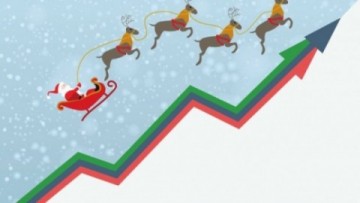
Now that the Federal Reserve (Fed) has finally moved the market beyond the discussion of when the initial rate hike will take place with their increase of the Federal Funds Target Rate by 25 Basis Points (0.25%) yesterday, we believe that the stock market will likely move higher over the course of the last couple of weeks of 2015 (though perhaps more muted and not as high as many investors would like) consistent with what is often referred to as a “Santa Claus Rally.” A Santa Claus Rally is an often cited stock market occurrence where positive stock market returns are realized over the last five trading days of the current year and the first two trading days of the New Year. According to the 2015 Stock Trader’s Almanac, a Santa Claus Rally has yielded positive returns in 34 of the past 44 holiday seasons going back to 1969. As a result, such a positive finish in 2015 would not be without historical precedent. Our belief is centered on the following:
• A positive confirmation from the Federal Reserve that they now feel confident that the U.S. economy is on stable enough ground to withstand the beginning stage of what we believe will be a gradual and protracted period of rising interest rates. This is important as many (including yours truly) were becoming concerned that the Fed may themselves be more concerned with future global economic growth potential and its impact on the impish U.S. economic recovery than they were previously communicating following the Fed’s “no-action” decision in September.
• A move away from Fed speculation and a return to market and economic fundamentals, both of which appear to be relatively positive in the U.S. Further evidence of a solidifying, though certainly not blockbuster, U.S. economy can be found this morning in Jobless Claims data, which showed a drop of 11,000 initial claims being filed during the week of December 6 – December 12. This does not suggest that improvements still do not need to be witnessed on the wages front but does speak generally to an improving jobs market, recognizing that the current labor force participation rate remains as an overarching concern.













Leave A Comment